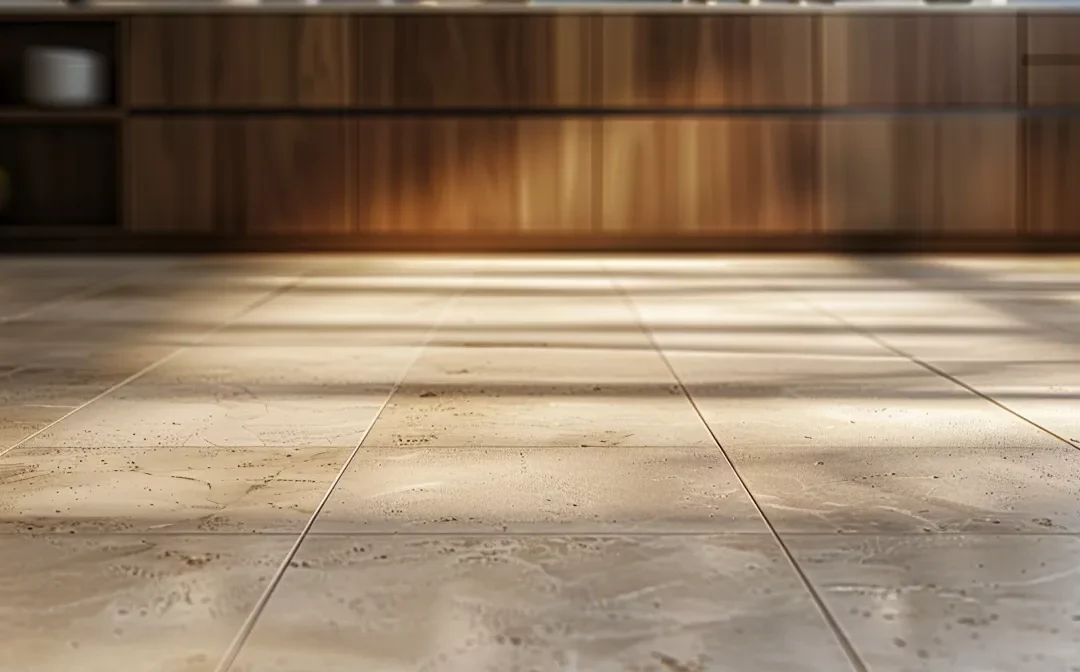Ideal Flooring Choices for Your Kitchen Makeover
When considering kitchen renovations, flooring choices play a crucial role in achieving both aesthetics and functionality. The Housing Industry Association emphasizes that selecting the right material can significantly impact the overall price of your home improvement project. Among various options, travertine stands out for its elegance, while other materials provide their unique benefits tailored to different styles and budgets. Choosing the ideal flooring can elevate your kitchen’s design from ordinary to extraordinary. Keep reading to explore the best flooring options that can transform your space while fitting your vision and needs.
Key Takeaways
- Porcelain tile is durable and water-resistant, making it ideal for busy kitchens
- Cement flooring offers robust customization and contemporary style for modern renovations
- Hardwood floors provide natural beauty but require careful maintenance due to moisture sensitivity
- Tile flooring is versatile, yet grout maintenance can be a challenge for homeowners
- Vinyl and laminate flooring are cost-effective options that combine style with practicality for renovations
Exploring the Best Flooring Options for Your Kitchen
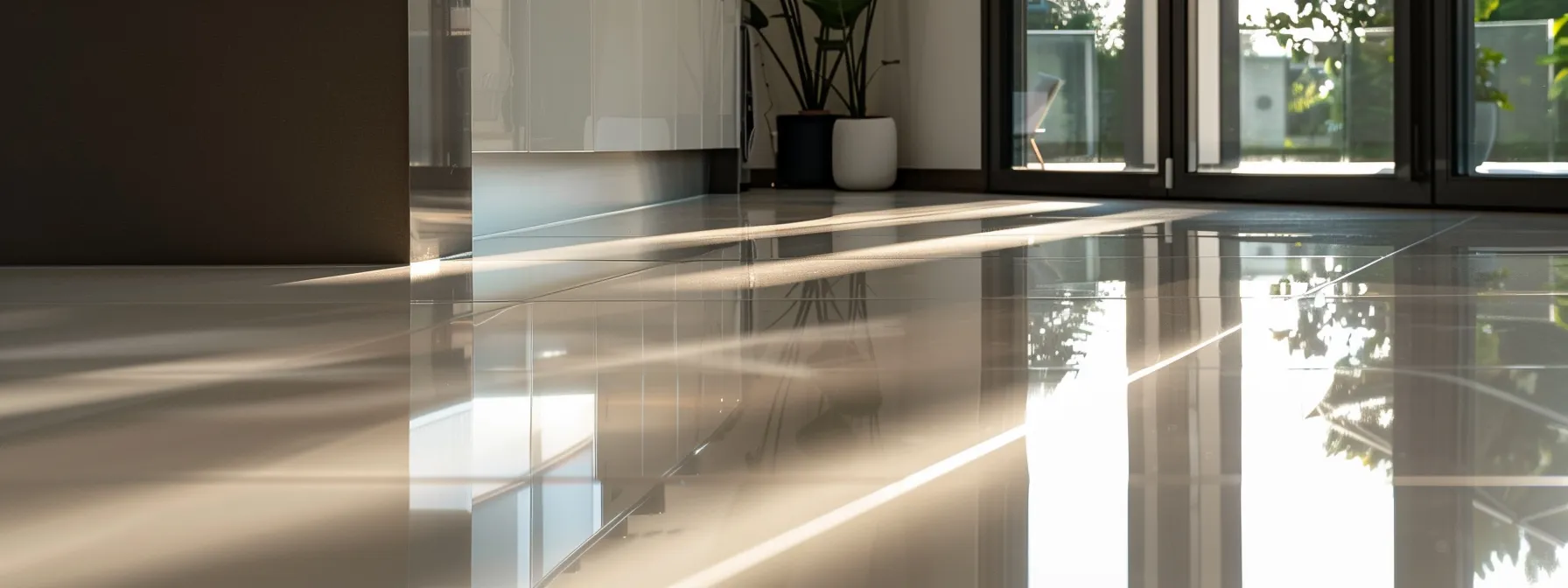
Porcelain tile is often regarded as a top choice for kitchen flooring due to its exceptional hardness and durability. Its resistance to water and stains makes it a practical option for busy households, fitting seamlessly into both functional and stylish interior design schemes. Additionally, porcelain tile offers a variety of textures and colors, allowing homeowners to find the Housing Industry Association perfect match for their aesthetic preferences.
Cement flooring has gained significant popularity in modern kitchen renovations. Known for its robustness, cement can easily withstand the rigors of daily use, and its customizable nature allows for unique coatings that enhance its appeal. This versatility not only complements various interior design styles but also makes it a favored option for those seeking a contemporary look.
When contemplating flooring options, it is essential to consider the long-term performance and maintenance of each material. For instance, while wood offers warmth and beauty, it requires careful upkeep; on the other hand, materials like porcelain tile and cement deliver both visual appeal and functional resilience. Homeowners can confidently invest in these flooring choices, knowing they will maintain their aesthetic integrity and functionality over time.
As homeowners seek durability and style, hardwood floors emerge as a top contender. Their classic elegance creates an inviting atmosphere, making them a popular choice for any kitchen renovation.
1. The Timeless Appeal of Hardwood Floors
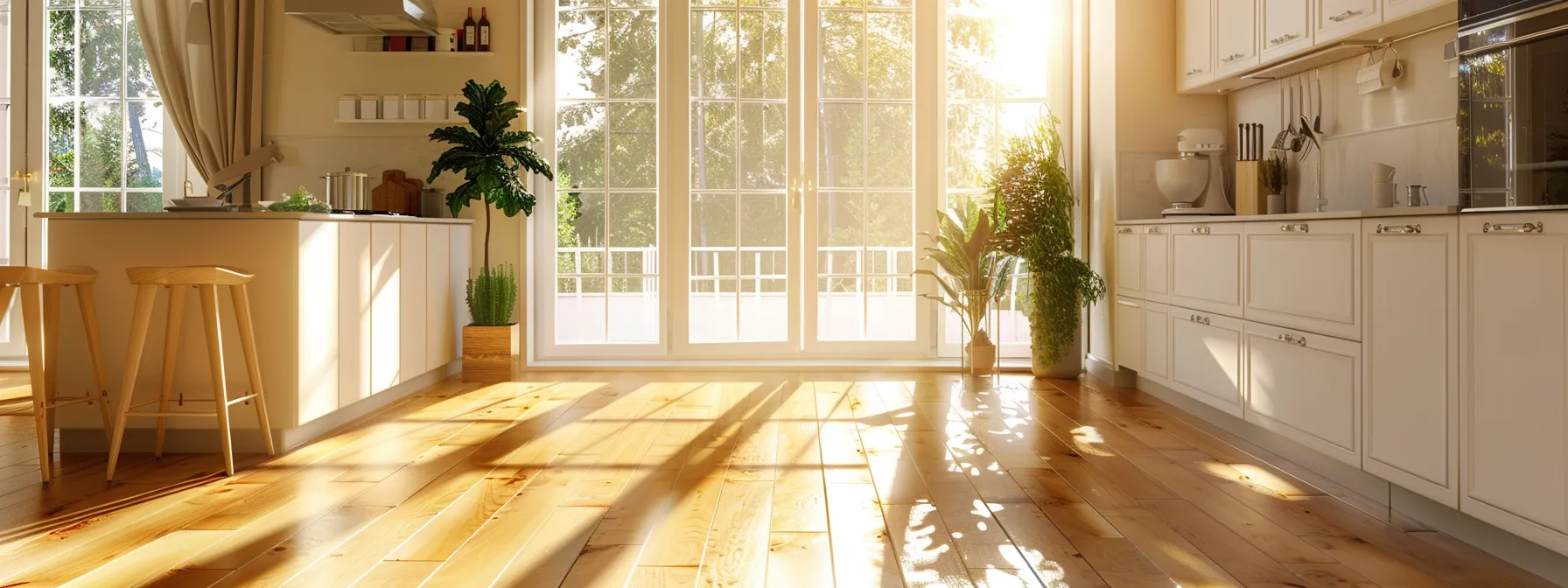
Hardwood floors, particularly varieties like maple, bring a sense of elegance and warmth to kitchen spaces, making them a popular choice among homeowners. The aesthetic appeal of hardwood is undeniable, with its natural grains and rich tones enhancing interior design. However, the pros of choosing hardwood must be carefully weighed against potential risks, especially in high-traffic areas like the kitchen. While hardwood can withstand moderate wear, it is more susceptible to moisture damage compared to alternatives such as linoleum or laminate flooring. This susceptibility raises concerns about longevity and maintenance, prompting homeowners to consider whether the charm of hardwood justifies its limitations in a kitchen environment.
Pros of Choosing Hardwood
Hardwood floors offer numerous advantages that appeal to homeowners looking to elevate their kitchen’s aesthetic. Their natural beauty effortlessly integrates with other features, such as a striking granite countertop or elegant porcelain elements, creating a cohesive living space that flows seamlessly into adjacent areas like the living room. Additionally, hardwood‘s durability allows it to withstand the daily challenges of a busy kitchen, including soil buildup and moisture exposure, providing a functional yet stylish foundation.
Cons of Hardwood in the Kitchen
Hardwood floors, while appealing, present specific drawbacks in kitchen settings. Their porosity makes them vulnerable to water damage, particularly near high-moisture areas like sinks, which can lead to warping and deterioration over time. In comparison to more water-resistant options, such as brick or tile, hardwood can demand excessive maintenance, detracting from the convenience sought in a kitchen renovation.
Hardwood floors offer a classic elegance that enhances any room, but alternative options can elevate both style and practicality. Enter tile flooring, a robust choice that combines strength with stunning designs, ready to transform your space into a modern masterpiece.
2. The Strength and Style of Tile Flooring
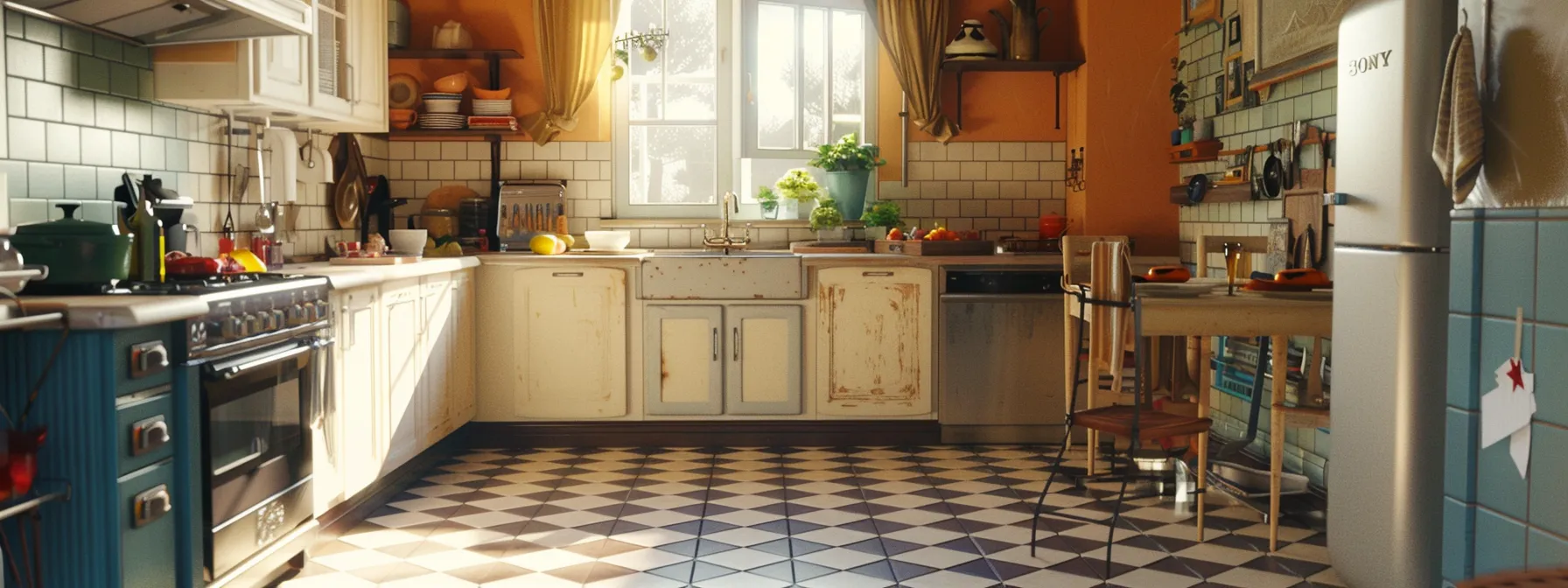
Tile flooring stands out as a popular choice for kitchen renovations, especially for those seeking a balance of durability and style. The advantages of tile are numerous, including its resistance to moisture, making it suitable for areas prone to spills. Featuring diverse patterns, textures, and colors, tiles can effortlessly integrate into any design scheme, creating an appealing environment. However, there are challenges with tile floors, particularly related to grout maintenance and potential coldness underfoot. Furthermore, when considering installations adjacent to spaces like the bathroom, homeowners must weigh tile‘s rigidity against the comfort and warmth that options like wood or polyvinyl chloride can provide. Understanding both the pros and cons is essential for making an informed decision in the kitchen flooring selection process.
Pros of Opting for Tile
Tile flooring, particularly ceramic options, presents notable advantages for kitchen renovations. Its moisture resistance makes it an ideal choice for spaces that may experience spills, ensuring longevity and ease of maintenance. Moreover, many tiles come with a manufacturer warranty, providing homeowners with peace of mind regarding durability and performance.
Another benefit of tile is its versatility across various home areas. Whether it’s a kitchen, bathroom, or even a laundry room and basement, tile can adapt to different environments without compromising style or functionality.
- Moisture resistance suitable for spills
- Manufacturer warranty for durability
- Adaptability across various home environments
Cons Associated With Tile Floors
Despite their many advantages, tile floors come with challenges that homeowners should consider. The grout lines, which can trap sand and moisture, often require regular cleaning to prevent water damage and staining, creating a maintenance demand that can be bothersome. Additionally, the hard surface of tile can be uncomfortable underfoot, particularly if the kitchen is adjacent to areas furnished with softer cabinetry or flooring materials, making it less forgiving for those who spend long periods in the kitchen.
Tile flooring impresses with its aesthetic appeal and resilience. In contrast, vinyl flooring introduces a new level of durability and versatility that meets the demands of modern living.
3. The Durability and Versatility of Vinyl Flooring
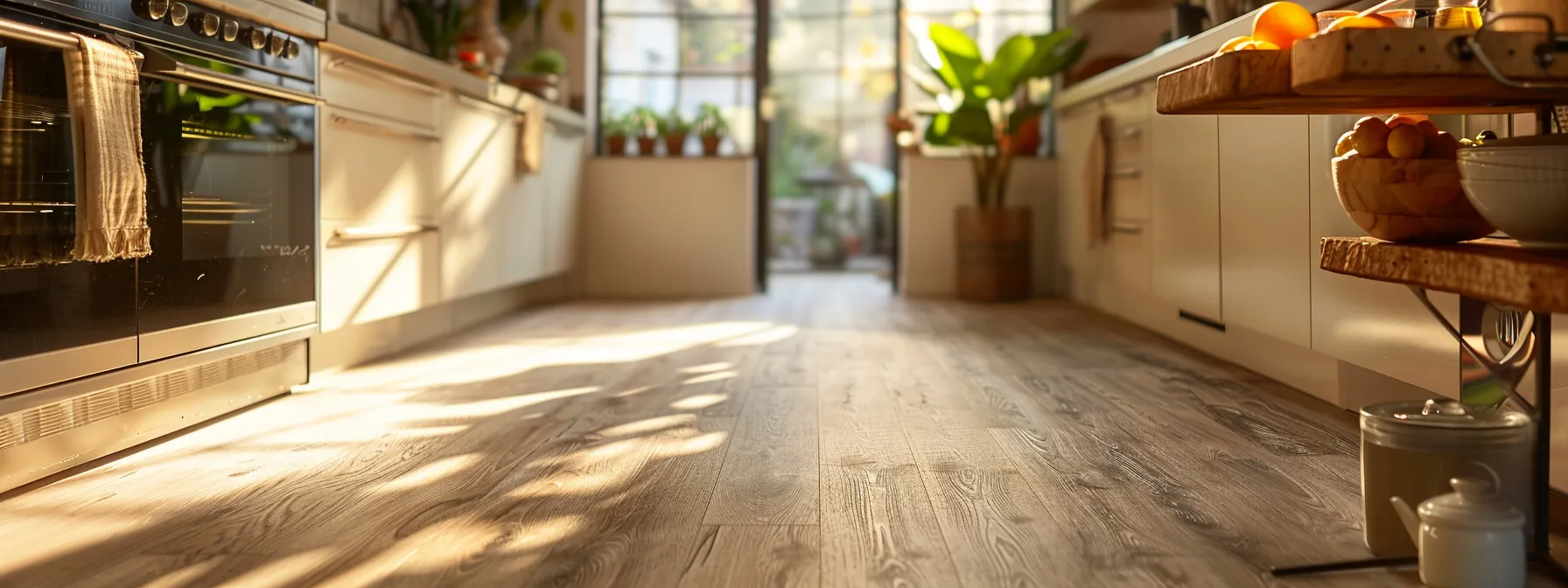
Vinyl flooring presents an appealing choice for homeowners undertaking a kitchen renovation, combining durability with versatility that accommodates various design aesthetics. Its ability to mimic materials like oak and limestone enhances its popularity in settings where aesthetics matter, yet functionality cannot be compromised. Vinyl holds up well against daily activities while offering a softer feel underfoot compared to harder materials. However, it’s essential to evaluate potential drawbacks, such as vulnerability to heat near elements like a fireplace or its performance on stairs and joists over time. Understanding both the advantages and limitations of vinyl flooring enables homeowners to make informed decisions that align with their renovation goals.
Vinyl Flooring Pros
Vinyl flooring offers remarkable benefits that make it a favored selection for kitchen renovations. Its waterproofing capabilities ensure that it can withstand spills and humidity, making it ideal for the kitchen environment, where these factors frequently come into play. Additionally, vinyl’s ability to reflect different lighting conditions allows it to complement the overall aesthetic, enhancing the space without the drawbacks of traditional flooring, such as the comfort level found in carpet.
The variety in designs and textures available in vinyl flooring means homeowners can enjoy the look of luxurious materials while still accessing a practical solution. Withstanding exposure to sunlight, vinyl flooring maintains its color and integrity over time, ensuring that the kitchen remains a vibrant and inviting space. This combination of style and function makes vinyl an outstanding choice for those looking to transform their kitchen beautifully and efficiently.
Cons to Consider for Vinyl
While vinyl flooring boasts numerous advantages, it is not without its limitations. One potential drawback is its susceptibility to wear and tear over time, particularly in high-traffic areas where heavy foot traffic can impact its overall durability. Additionally, improper installation during construction might lead to gaps or buckling, which can create conditions for mold growth if moisture accumulates.
Homeowners should also be cautious about how they maintain their vinyl floors. Using the wrong cleaning tools, such as a vacuum with a rough brush, may cause surface scratches, diminishing the flooring’s aesthetic appeal and longevity. Awareness of these concerns aids in making an informed choice regarding kitchen flooring options.
- Susceptible to wear and tear over time
- Improper installation may lead to gaps and mold growth
- Incorrect cleaning methods can scratch the surface
Vinyl flooring stands tall in the realms of durability and style, making it a top choice for many homeowners. Yet, for those seeking a budget-friendly option without compromising on quality, laminate flooring offers an exciting alternative.
4. Laminate Flooring: A Cost-Effective Alternative
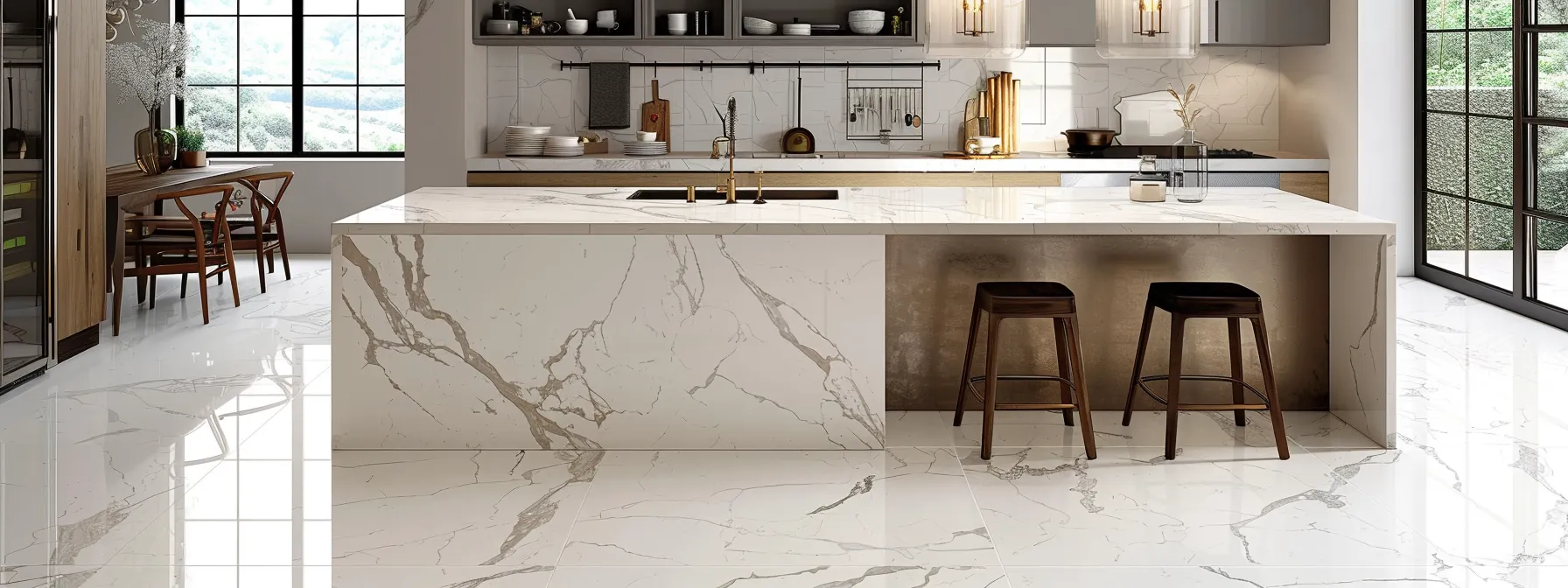
Laminate flooring stands out as a cost-effective alternative that appeals to many homeowners looking to achieve a stylish kitchen without breaking the bank. Its ability to mimic luxurious materials, including marble and engineered wood, adds a touch of elegance to spaces while providing significant savings. Many brands offer laminate options that resist stains and scratches, making it suitable for busy kitchens. Additionally, its straightforward installation process enables those inclined to do it yourself to take on the project with relative ease. However, despite its advantages, laminate flooring does come with certain disadvantages, including a lack of robust moisture resistance compared to concrete or tile. Understanding both the strengths and limitations of laminate flooring is essential for making an informed choice that meets aesthetic and practical needs.
Advantages of Laminate Flooring
Laminate flooring presents numerous advantages that appeal to homeowners seeking a practical solution for their kitchen makeover. Its floating floor design simplifies installation, allowing for quick and efficient setup, and its ability to mimic the appearance of hardwood enhances the overall aesthetic of both the kitchen and adjoining dining room. Additionally, many laminate options are environmentally friendly, incorporating sustainable materials, while also offering considerable resistance to liquid spills, ensuring the flooring maintains its integrity in a busy household.
Disadvantages of Using Laminate
Laminate flooring, while appealing for its aesthetic flexibility and affordability, does have limitations that homeowners should consider. Unlike tile or plywood, laminate lacks robust moisture resistance, making it less suitable for areas prone to spills or water exposure, such as near sinks or showers. Additionally, while laminate mimics the appearance of more costly materials like cork, it may not offer the same durability or expert craftsmanship associated with higher-end flooring solutions.
Laminate flooring provides an affordable solution for many, but there are other innovative choices that combine comfort with eco-friendliness. Cork floors emerge as a compelling option, blending sustainability with a cozy feel that stands out in any renovation project.
5. Cork Floors for Comfort and Sustainability
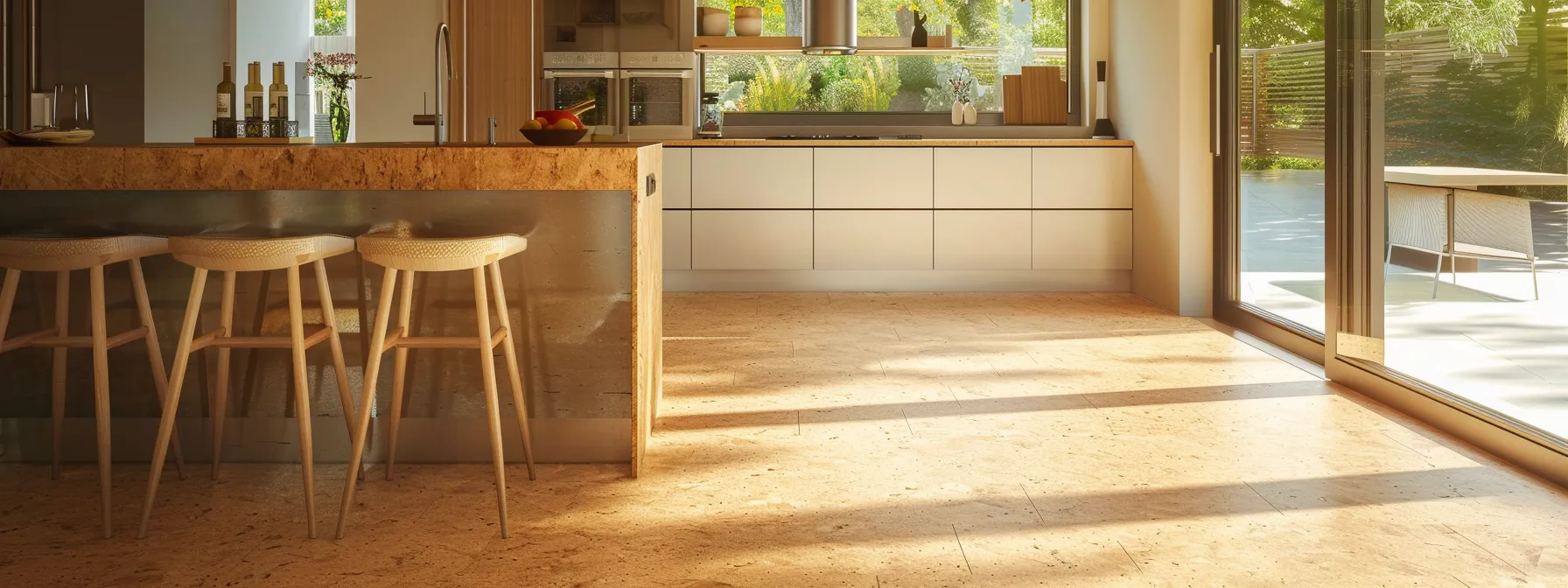
Cork flooring offers a unique blend of comfort and sustainability, making it an appealing option for kitchen renovations. Homeowners appreciate its natural cushioning, which provides a softer surface underfoot compared to harder materials like slate, reducing fatigue during meal preparation and clean-up. Additionally, cork‘s innate resistance to stains and water, when treated with a layer of polyurethane, enhances its functionality in a room that frequently encounters spills, particularly near the dishwasher. Despite these advantages, potential drawbacks exist; homeowners must be aware of cork‘s susceptibility to moisture damage over time and consider long-term maintenance needs. An informed decision regarding cork will balance its practical benefits with the care it requires in a bustling kitchen environment.
Reasons to Choose Cork Flooring
Cork flooring stands out as an eco-friendly choice for kitchen renovations, effectively complementing other natural materials such as bamboo and sandstone. Its inherent antimicrobial properties help reduce dust buildup, ensuring a cleaner environment, particularly in spaces used for cooking. Homeowners appreciate the unique combination of comfort and sustainability that cork offers, making it an attractive flooring option for busy kitchens.
Drawbacks of Cork in the Kitchen
While cork flooring offers numerous benefits, it also has its drawbacks in a kitchen setting. Its natural susceptibility to moisture can lead to damage if spills are not promptly cleaned or if the kitchen remodel does not adequately address moisture control. Furthermore, cork may fade in direct sunlight, diminishing its aesthetic appeal over time, necessitating careful consideration during the design phase.
- Moisture sensitivity can lead to potential damage.
- Requires prompt cleaning of spills to prevent deterioration.
- Prone to fading under direct sunlight over time.
Cork floors provide a cozy, eco-friendly option that cushions every step, perfect for creating a welcoming atmosphere. Meanwhile, concrete flooring steps in with bold designs and sleek finishes, making it an ideal choice for those who crave a contemporary edge.
6. Concrete Flooring for a Modern Look
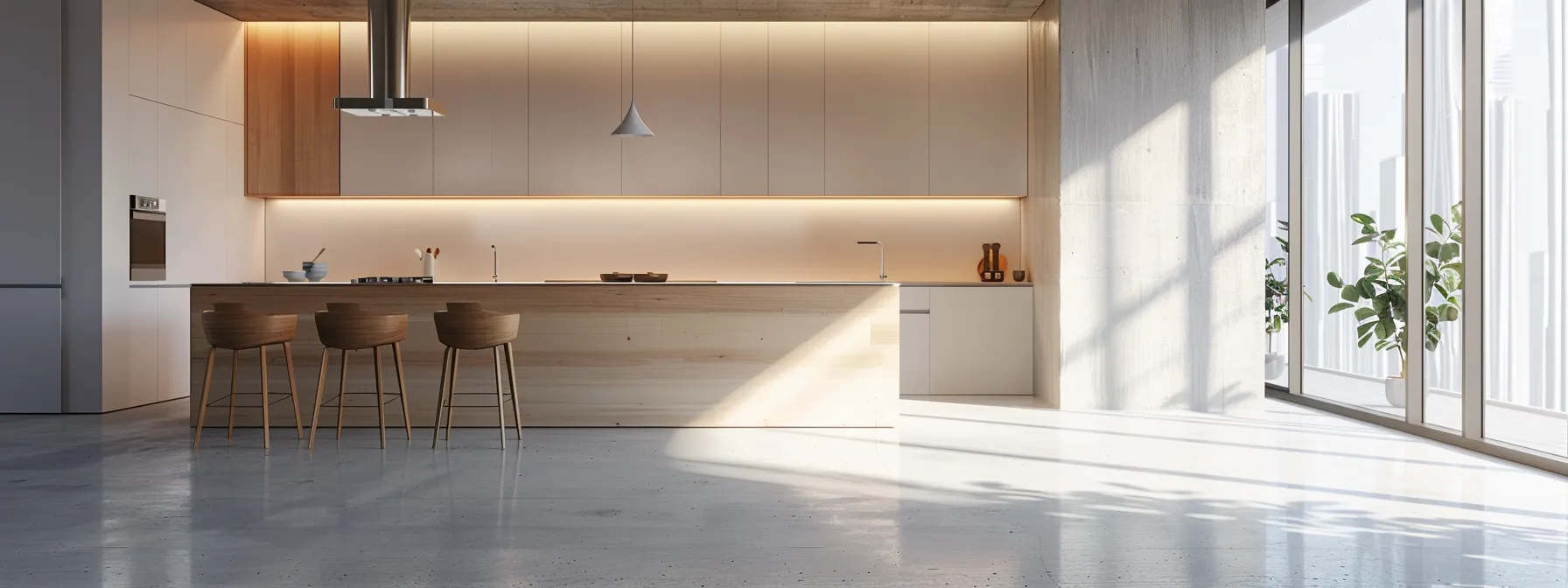
Concrete flooring presents a contemporary choice that appeals to homeowners aiming for a sleek and industrial aesthetic in their kitchens. Its durability ranks it among the most resilient flooring options available, capable of withstanding heavy foot traffic and general wear. Additionally, concrete can be treated with various finishes and stains, allowing for unique designs that suit individual tastes. While the advantages are compelling, concrete flooring is not without its challenges. Homeowners should be aware that its hard surface can be unyielding underfoot for extended periods and requires careful attention to temperature fluctuations, which may lead to cracking. Understanding both the positive attributes and potential drawbacks of concrete flooring will aid homeowners in determining if this material aligns with their renovation goals.
The Upside of Concrete Floors
Concrete floors offer several significant advantages, making them a popular selection for kitchen renovations. Their exceptional durability ensures they can withstand high foot traffic and resist wear and tear over time, satisfying the demands of a bustling kitchen environment. Furthermore, homeowners appreciate the range of design options available, as concrete can be stained, polished, or textured to create a unique and personalized aesthetic that complements the overall kitchen decor.
Homeowners can also benefit from the energy efficiency of concrete flooring. This material retains heat well, which can contribute to a more stable indoor temperature, particularly during colder months:
- High durability that withstands daily use.
- Variety of finishing options for a tailored look.
- Energy-efficient properties that contribute to consistent temperature regulation.
The Downside of Concrete Flooring
Concrete flooring, while boasting impressive durability, does present some challenges that homeowners should consider. Its hard surface can be uncomfortable for long periods, especially for those who spend time on their feet while cooking or cleaning. Furthermore, concrete is susceptible to cracking due to temperature changes, which may compromise its appearance and integrity over time.
Homeowners should also be mindful that concrete requires proper sealing to protect against stains and moisture, adding another layer of maintenance to ensure its longevity.:
- Unyielding feel underfoot can lead to discomfort.
- Susceptible to cracking with temperature fluctuations.
- Requires sealing for protection against stains and moisture.
Concrete flooring shines with its sleek, contemporary appeal, but the choice of flooring for a kitchen renovation can make all the difference. Understanding the right guidelines will empower homeowners to create a stylish and functional space.
Guidelines for Selecting the Right Flooring for Your Kitchen Renovation
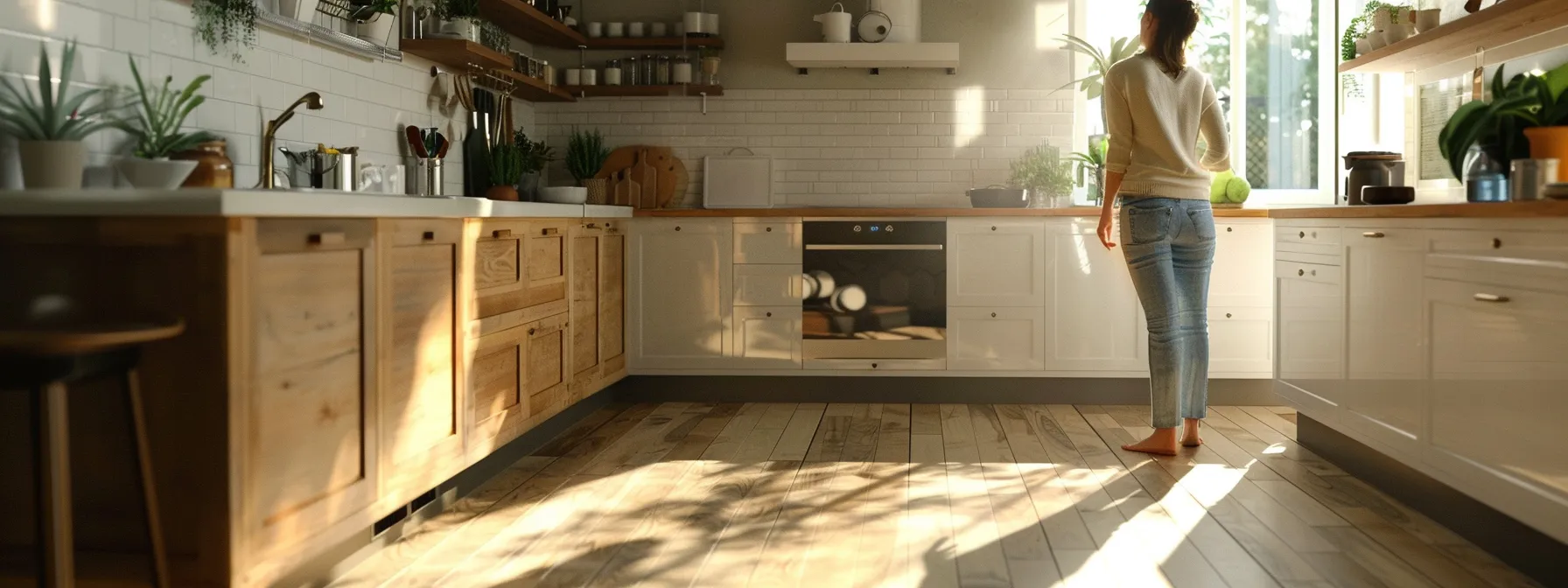
Selecting the ideal flooring for a kitchen renovation requires a thoughtful approach, where several key factors come into play. Homeowners must first evaluate the durability needs of their space, ensuring the chosen material can withstand daily wear. Water resistance stands as a critical consideration, particularly in a room prone to spills and moisture. Aligning the flooring style with the overall kitchen design enhances the aesthetic appeal while maintaining a cohesive look. It is equally important to balance quality with budget, finding options that deliver value without compromising on performance. Visualizing the potential aesthetics can assist in making choices that resonate with personal taste. Finally, planning for easy maintenance ensures the floor remains functional and beautiful over time, allowing homeowners to enjoy their renovations without added stress.
Assessing the Durability Needs
When assessing durability needs for kitchen flooring, homeowners should consider the level of foot traffic the area experiences. High-traffic kitchens require materials that resist scratches, dents, and other forms of wear, ensuring longevity despite daily challenges. It’s also vital to evaluate how well each flooring option withstands spills and moisture, as kitchens often see a variety of substances that can cause damage if not addressed appropriately.
Considering Water Resistance
This paragraph highlights the significance of water resistance when selecting flooring for a kitchen renovation. Given the likelihood of spills and splashes in this highly utilized space, homeowners must prioritize materials that can effectively repel moisture. Choosing water-resistant flooring reduces the risk of damage, enhances the longevity of the materials, and contributes to a cleaner, more hygienic environment.
Matching the Kitchen’s Style
When updating a kitchen, homeowners should ensure that the new flooring complements the overall design and aesthetic. Selecting a flooring material that harmonizes with cabinetry, countertops, and other design elements can enhance the visual coherence of the space. A well-matched floor not only contributes to an inviting atmosphere but also reinforces the intended style, whether it be modern, rustic, or traditional.
Balancing Quality With Budget
Investing in kitchen flooring requires careful consideration of both quality and budget. Homeowners should assess their needs to identify options that provide durability while adhering to financial constraints. By exploring a variety of materials and seeking expert guidance, individuals can select flooring that enhances both functionality and aesthetic appeal without compromising on overall value.
Visualizing the Aesthetics
Visualizing the aesthetics of kitchen flooring plays a crucial role in ensuring a cohesive design that resonates with personal style. Homeowners benefit from considering how different materials, colors, and textures can interact with existing features, such as cabinetry and countertops, to create an inviting atmosphere. A well-thought-out selection not only enhances the overall beauty of the space but also helps establish a focal point that elevates the kitchen’s functionality and appeal.
Planning for Easy Maintenance
Choosing flooring that simplifies maintenance can significantly enhance the overall functionality of a kitchen. Homeowners should prioritize materials that are easy to clean and resistant to staining, minimizing the time and effort required to keep the space looking pristine. Furthermore, considering options that require minimal upkeep ensures that the floor remains in good condition for years to come:
- Opt for water-resistant materials to prevent damage from spills.
- Consider finishes that require less frequent sealing or treatments.
- Choose options with smooth surfaces that facilitate easy cleaning.
Choosing the perfect flooring is just the first step in your kitchen renovation journey. Next, it’s time to weigh the benefits of tackling the installation yourself or enlisting the expertise of professionals for a flawless finish.
Deciding Between DIY and Professional Installation of Your New Kitchen Floor
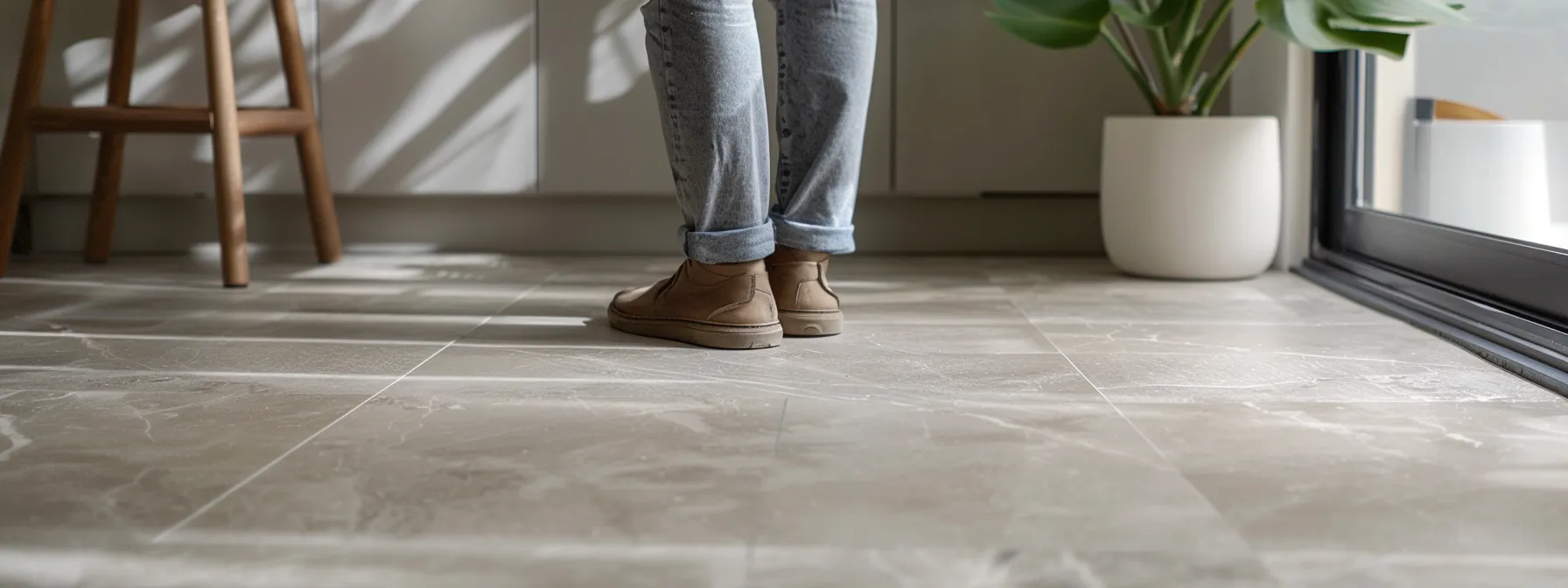
Homeowners must carefully consider their choice between DIY installation and hiring professionals for new kitchen flooring. While a DIY approach may offer cost savings and a sense of personal achievement, it often requires a significant time commitment and a solid understanding of flooring materials and installation techniques. Improper installation can lead to costly mistakes that may compromise the durability and appearance of the floor.
On the other hand, enlisting professional services ensures a high-quality installation that adheres to industry standards. Professionals bring the experience and expertise needed to handle various flooring materials, effectively addressing challenges that may arise during the project. This added assurance often translates into better longevity and performance of the flooring, providing peace of mind for homeowners.
Ultimately, the decision hinges on the homeowner’s confidence in their abilities and their desire for a flawless finish. Those comfortable with hands-on work may choose to undertake the project as a personal endeavor, while others might prefer the reliability of expert help to guarantee an optimal outcome. Either way, understanding the implications of each approach is crucial for achieving a successful kitchen makeover.
